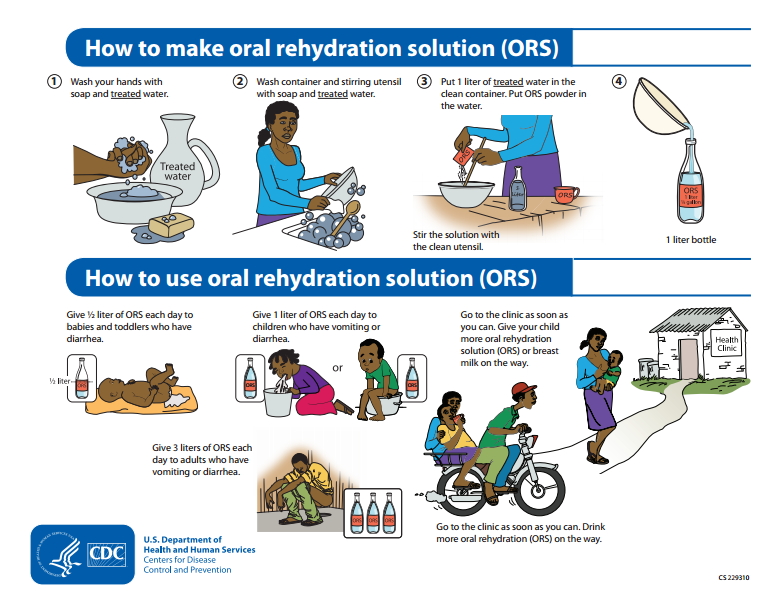Escherichia coli enteritis medical therapy
|
Escherichia coli enteritis Microchapters |
|
Differentiating Escherichia coli enteritis from other Diseases |
|---|
|
Diagnosis |
|
Treatment |
|
Escherichia coli enteritis medical therapy On the Web |
|
American Roentgen Ray Society Images of Escherichia coli enteritis medical therapy |
|
Risk calculators and risk factors for Escherichia coli enteritis medical therapy |
Editor-In-Chief: C. Michael Gibson, M.S., M.D. [1] Associate Editor(s)-in-Chief: Yazan Daaboul, M.D.; Serge Korjian M.D.
Overview
Medical Therapy
Rehydration
- The mainstay of therapy for E. coli enteritis is rehydration.
- Oral rehydration fluids is indicated among patients who can tolerate oral intake, otherwise IV rehydration is indicated.
- Over the counter oral rehydration solutions (ORS) are optimal options for oral rehydration and are usually available for both adults and children.
- Oral rehydration solutions may be home-made by mixing the following:
- Drinking water: 1 liter
- Salt: 0.5 teaspoon
- Sugar: 6 teaspoons
- Rehydration must be gradual until signs of dehydration (e.g. dry mouth, oliguria) are resolved. Drinking ORS must be slow (1 sip every 5 minutes).
- Children often require 1 liter of ORS, whereas adults often require 3 liters of ORS.
- Energy drinks with high concentrations of electrolytes (e.g. sports drinks) may be offered to adults, but not children.
- Fluids high in sugar content (e.g. soda) are not recommended because they may worsen the dehydration.
Antimicrobial Therapy
- Since the majority of cases of E. coli enteritis are self-limited, antimicrobial therapy is generally not recommended.
- Antimicrobial therapy using either TMP-SMX or fluoroquinolone may be administered (but is not required) in ETEC infection (traveler's diarrhea), EPEC infection, and EIEC infection.
- In contrast, antimicrobial therapy is NOT recommended in EHEC infections due to possibly increased risk of hemolytic uremic syndrome and prolonged shedding of the organism and production of Shiga-like toxins.
Other Pharmacologic Agents
- 1. Escherichia coli species
- 1.1. Enterotoxigenic E. coli (ETEC)
- Preferred regimen: TMP-SMX, 160 and 800 mg, respectively, bid, for 3-7 days (if susceptible) OR Fluoroquinolone (e.g., 300 mg Ofloxacin, 400 mg Norfloxacin, or 500 mg Ciprofloxacin bid for 3-7 days)
- 1.2. Enteropathogenic E. coli (EPEC)
- Preferred regimen: TMP-SMX, 160 and 800 mg, respectively, bid, for 3-7 days (if susceptible) OR Fluoroquinolone (e.g., 300 mg Ofloxacin, 400 mg Norfloxacin, or 500 mg Ciprofloxacin bid for 3-7 days)
- 1.3. Enteroinvasive E. coli (EIEC)
- Preferred regimen: TMP-SMX, 160 and 800 mg, respectively, bid, for 3-7 days (if susceptible) OR Fluoroquinolone (e.g., 300 mg Ofloxacin, 400 mg Norfloxacin, or 500 mg Ciprofloxacin bid for 3-7 days)
- 1.4. Enterohemorrhagic E. coli (EHEC)
- Preferred regimen: Antibiotic therapy is not recommended due to possibly increased risk of hemolytic uremic syndrome and prolonged shedding.
